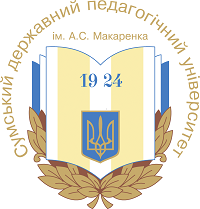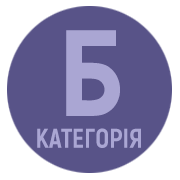INTERTEXTUALITY AS LINGUISTIC & INTELLECTUAL PLAY WITH THE READER (ON THE MATERIAL OF ESSAYS BY TARAS PROKHASKO)
DOI:
https://doi.org/10.32782/philspu/2025.11.4Keywords:
essay, intertextuality, quotation, allusion, reminiscence, periphraseAbstract
The article examines the linguistic manifestation of intertextual connections and their functional load in Taras Prokhasko's essays published in the collection “Tak, ale...” (“Yes, but...”). It is shown that the writer's short prose is aimed at dialogical interaction with the reader: the author encourages the reader to engage in intellectual cooperation, activating imagination, cultural memory and creative communication strategies. This interaction is facilitated by play poetics, within which intertextuality should be considered. The writer's artistic manner is characterized by various ways of actualizing intertextuality in the language of essays: direct and transformed unmarked quotations (with and without attribution), allusions, reminiscences, periphrases.Several intertexts often coexist in one text: they are “linked” by key words and partly share senses. Intertexts perform a noticeable text-forming function, as they are an impetus for the unfolding of the narrative, a way to deepen or summarize it. Conceptual, expressive and play functions are also important. Many essay titles are transformed quotations that become the driving force of the narrative and, at the same time, a kind of “riddle” for the reader. Intertextual elements are subordinated to various authorial strategies in the unfolding of the narrative: recollection, reflection, irony, etc. Prokhasko organically entwines the quoted text with his own, creating a collage, a polyphony of author’s reflections. The heterogeneous nature of intertexts is noted, and within a single essay we can see fragments of the different discourses. This technique also serves to activate the reader's attention and to form a characteristic postmodern multistylistics. The leading syntactic means for enforcing the quotations and creating a kind of artistic dialogue are pointed out. The intertextual units are defined as taken from scientific (biological, mathematical), fiction, colloquial, Communist and other discourses.
References
Шевченко Т. Есеїстика українських письменників як феномен літератури кінця ХХ – початку ХХІ ст. : монографія. К. : Вид. дім Д. Бураго, 2019. 584 с.
Сільман К. В. Есей як жанр на перетині літератури та журналістики : дис. … канд. філол. наук: 10.01.06. Миколаїв, 2019. 228 с.
Кондратенко Н. В. Синтаксис українського модерністського і постмодерністського художнього дискурсу : монографія. К. : Вид. дім Д. Бураго, 2012. 328 с.
Тепшич А. І. Мовна гра як домінанта постмодерного дискурсу (на матеріалі прозових творів представників станіславського феномена) : монографія. Вінниця: ТОВ «Нілан-ЛТД», 2017. 192 с.
Коваль Н. Не давати риби, а дати вудку: Тарас Прохасько про написання есеїв. Читомо. 22.01.2020. URL: https://chytomo.com/ne-davaty-ryby-a-daty-vudku-tarasa-prokhasko-pro-napysannia-eseiv/
Прохасько Т. Так, але… Чернівці : Meridian Czernowitz, 2024. 128 с.








